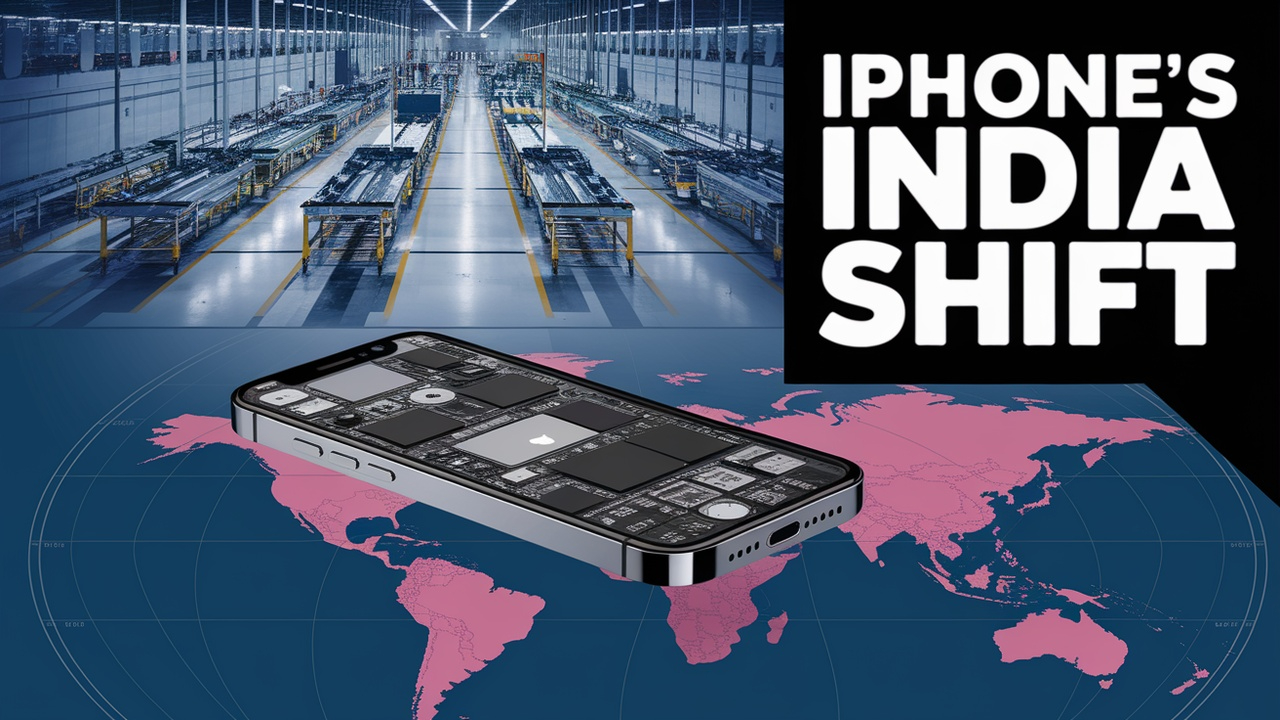Apple Airlifts 600 Tons of iPhones to Avoid Trump Tariffs
NEW DELHI — In March 2025, Apple, the U.S. tech titan, airlifted 600 tons, or around 1.5 million units, of iPhones from India to its home country: the United States.

The move was intended to sidestep heavy tariffs imposed by President Donald Trump on imports from China. Apple ramped up production in India using six chartered cargo red eyes from Chennai as it stockpiled inventory before tariff hikes took effect, ensuring stable iPhone prices in its biggest market.
Racing Against Tariffs
Apple’s airlift used six cargo jets, each carrying 100 tons, flying out of the Chennai airport in the southern state of Tamil Nadu since March. One jet took off right as new tariffs took effect on April 5. Each iPhone 14 and its charging cable weighs roughly 350 grams, so the 600 tons amounted to about 1.5 million phones, according to estimates from Reuters. It cut customs clearance time at Chennai from 30 hours to six using a “green corridor” model it uses in China. “Apple wanted to get ahead of the tariff,” said a person familiar with the plan who spoke on condition of anonymity to discuss a private strategy.
Trump’s tariffs on Chinese goods shot up to 125% on April 9, as compared to 54%. Imports from India were subject to a lower 26% tariff, which was put on hold for 90 days, barring China. The iPhone 16 Pro Max at $1,599 could have cost $2,300, based on a 54% margin, according to Rosenblatt Securities. Apple wanted to avoid those costs by airlifting iPhones from India. The company sells more than 220 million iPhones a year, with one-fifth of U.S. imports now coming from India, according to Counterpoint Research.
Boosting India’s Role
Apple increased production by 20% in India, hiring more workers and running its main Foxconn plant in Chennai on Sundays when the factory is normally closed. Based in Zengzhou, China, the plant produced 20 million iPhones in the past year; it offers iPhone 15 and 16 models. Apple’s two main suppliers, Foxconn and Tata, operate three factories in India and are building two more. Foxconn’s U.S. exports reached $770 million in January and $643 million in February 2025, compared with $110 million to $331 million in preceding months, according to customs data.
Apple’s diversification away from China, its main manufacturing hub, bolstered India’s role. In 2024, 14% of Apple’s iPhones were assembled in India, according to Bloomberg. This shift began years before, in the midst of U.S.-China trade tensions. Apple’s strategy aligns with Prime Minister Narendra Modi’s efforts to turn India into a manufacturing hub. The Indian government helped Apple by streamlining customs, in line with Modi’s export agenda.
Tariff Challenges and Context
Trump’s tariffs are intended to revitalize U.S. manufacturing but threaten to increase consumer prices. Chinese imports get slapped with heavy levies at 125%, but India’s stay of execution on a 26% tariff gives Apple some breathing space. Analysts also warn that tariff-fueled iPhone price rises may not be over. Trump’s previously announced 90-day reprieve — announced April 9 — doesn’t merely exclude China, pressing on Apple’s domestic Chinese supply chain. Posts on X commented on Apple’s “panic logistics,” with some praising the move and others calling for U.S. production.
According to Reuters, apple excise airlifts, worth $2 billion in exports, hit record high in March. Foxconn shipped $1.31 billion in smartphones alone, as much as in January and February combined. This indicates Apple’s urgency in lock up U.S. inventory. The company’s petitioning of customs officials for more expedient processing times and for Sunday shifts at Foxconn reflect its agility in dodging trade barriers. China, however, is still important, making the vast majority of iPhones.
What’s Next for Apple
Apple’s airlift might slow price hikes, but the 90-day tariff break is fleeting. The company could also find itself challenged if tariffs are reinstated or broadened. And scaling up production in India further seems likely, with plans for two more factories. According to X posts, Apple might also request exemptions from tariffs. Over the long term, shifting some production to the U.S. might fit Trump’s goals, but experts say the costs make this improbable in the near horizon.
This opens a door for tech companies in trade wars. Other firms, such as Samsung, are hoarding chips, according to PC Gamer. Of Apple’s success in India, competitors may find the inspiration to diversify supply chains. As tariffs change, consumers will need to watch for price changes. For now, Apple’s airlift keeps the iPhones flowing, but the trade terrain is rattled. Tech fans and investors need to stay tuned to Apple’s next moves.